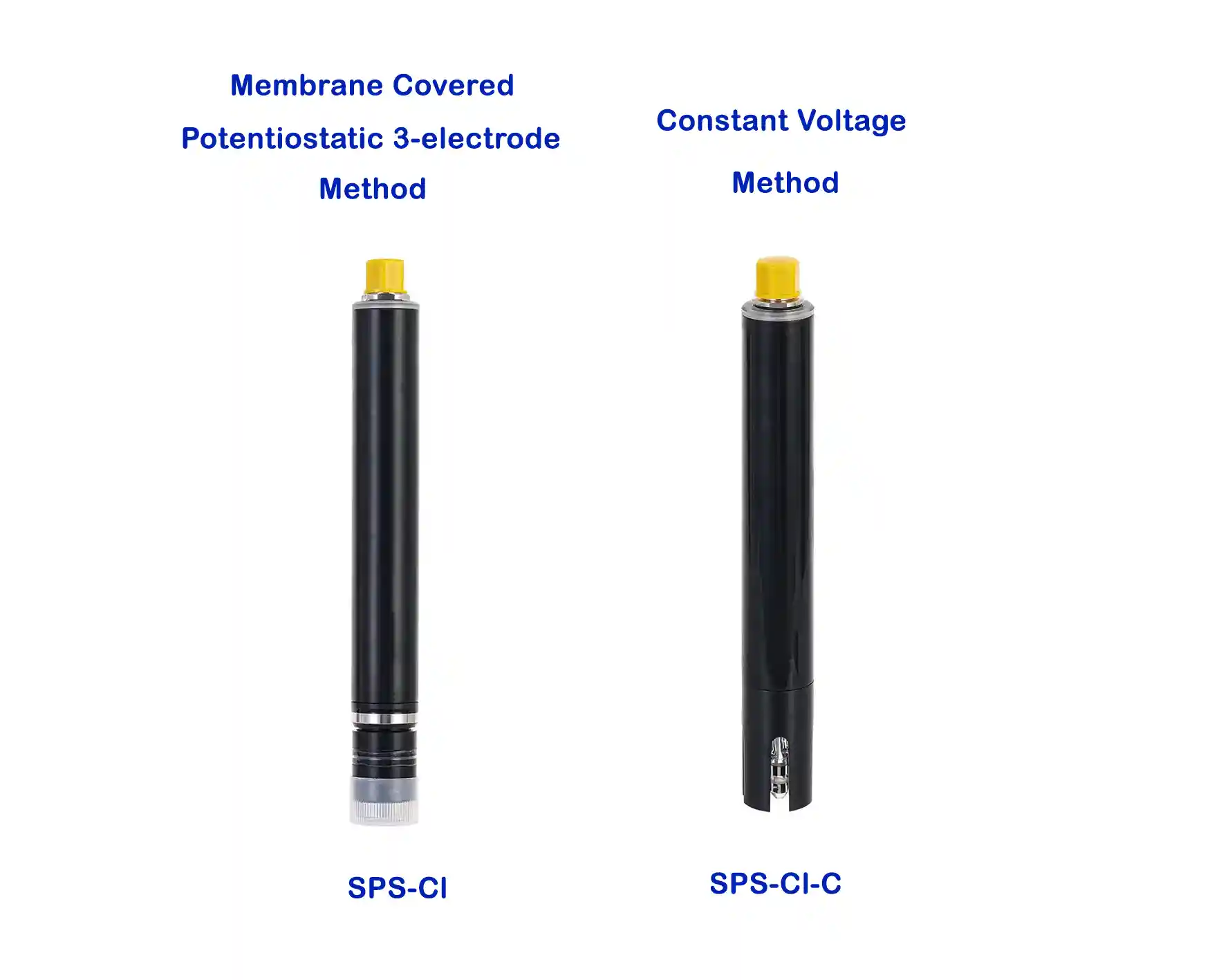Die membranbedeckte potentiostatische 3-Elektroden-Methode und die Konstantspannungsmethode sind beides elektrochemische Techniken, die sich jedoch in ihren Kontrollmechanismen, Anwendungen und Versuchsaufbauten unterscheiden. Im Folgenden finden Sie einen detaillierten Vergleich:
1. Membranbedeckte Potentiostatische 3-Elektroden-Methode
- Grundsatz:
- Verwendet eine Potentiostat zur Aufrechterhaltung einer konstantes Potenzial zwischen der Arbeitselektrode (WE) und der Referenzelektrode (RE), während der Strom zwischen der WE und der Gegenelektrode (CE) gemessen wird.
- A Membran deckt die Arbeitselektrode ab, um bestimmte Spezies (z. B. gelösten Sauerstoff in Clark-Sensoren) selektiv durchzulassen, während störende Substanzen blockiert werden.
- Wesentliche Merkmale:
- Potenzialgesteuert: Der Potentiostat regelt den Strom, um ein festes Potential an WE vs. RE zu erhalten.
- 3-Elektroden-Aufbau:
- Arbeitselektrode (WE): Der Ort, an dem die Reaktion stattfindet, die Sie interessiert.
- Referenzelektrode (RE): Bietet ein stabiles Referenzpotential.
- Gegenelektrode (CE): Schließt den Stromkreis ohne Beeinflussung des WE-Potenzials.
- Rolle der Membrane: Erhöht die Selektivität, da nur bestimmte Analyten zum WE gelangen.
- Anwendungen:
- Sensoren für gelösten Sauerstoff (Clark-Elektrode).
- Biosensoren (z. B. Glukosesensoren).
- Korrosionsstudien, bei denen ein selektiver Ionentransport erforderlich ist.
2. Methode der konstanten Spannung
- Grundsatz:
- Wendet eine Festspannung (nicht notwendigerweise kontrolliert im Vergleich zu einer Referenzelektrode) zwischen zwei Elektroden (oft ein 2-Elektroden-Setup).
- Der Strom wird in Abhängigkeit von der Zeit oder der Konzentration des Analyten gemessen.
- Keine aktive Potenzialregelung (im Gegensatz zu einem Potentiostat).
- Wesentliche Merkmale:
- Spannungsgesteuert, aber nicht potentiostatisch: Keine Rückkopplungsschleife zur Aufrechterhaltung eines präzisen Potenzials im Vergleich zu einer Referenz.
- Einfachere Einrichtung: Häufig verwendet 2 Elektroden (Arbeit und Zähler).
- Keine Membran (normalerweise): Es sei denn, sie sind speziell auf Selektivität ausgelegt.
- Der Strom kann aufgrund von Polarisationseffekten mit der Zeit abdriften.
- Anwendungen:
- Grundlegende Experimente zur Elektrolyse.
- Leitfähigkeitsmessungen.
- Einige amperometrische Gassensoren (ohne potenzielle Feinabstimmung).
Wesentliche Unterschiede
| Merkmal | Membranbedeckte potentiostatische 3-Elektrode | Methode der konstanten Spannung |
|---|---|---|
| Mechanismus der Kontrolle | Potentiostatisch (festes WE vs. RE-Potential) | Fest angelegte Spannung (keine Referenzelektrode) |
| Elektrodenaufbau | 3-Elektrode (WE, RE, CE) | Gewöhnlich 2-Elektroden (WE & CE) |
| Potenzielle Stabilität | Äußerst stabil (RE gewährleistet Genauigkeit) | Weniger stabil (keine Referenz) |
| Verwendung der Membrane | Ja (für Selektivität) | In der Regel keine |
| Aktuelle Messung | Misst präzise den Faradaystrom | Misst den Gesamtstrom (kann Drift enthalten) |
| Anwendungen | Biosensoren, Korrosionsstudien, O₂-Sensorik | Grundlegende Elektrolyse, einfache Amperemetrie |
Schlussfolgerung
- Die membranbedeckte potentiostatische 3-Elektroden-Methode ist präziser und selektiverideal für analytische Anwendungen, bei denen Potenzialkontrolle und Selektivität entscheidend sind.
- Die Konstantspannungsmethode ist einfacher und weniger präzisegeeignet für grundlegende elektrochemische Experimente, bei denen eine genaue Potenzialkontrolle nicht erforderlich ist.

